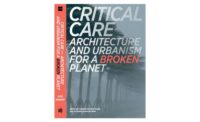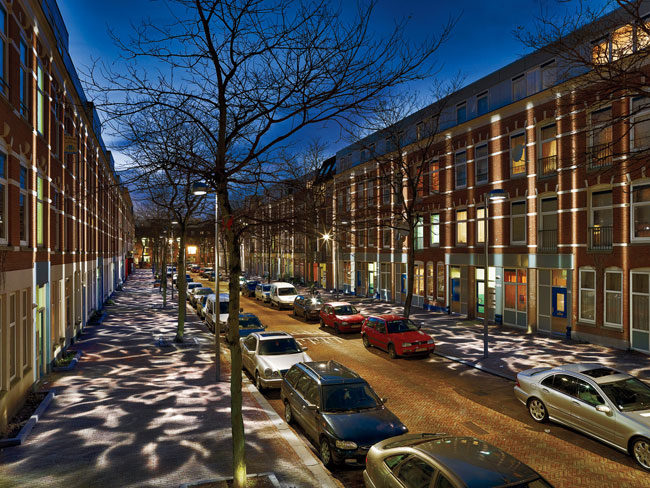Broken Light






Architects & Firms
Rotterdam, The Netherlands
The Atjehstraat was just an ordinary street in Ka'ten'drecht, a hardscrabble neighborhood in Rotterdam’s old harbor area, where immigrants and young people have taken the place of sailors and prostitutes. Now it is a special street, thanks to the Broken Light project of artist and lighting designer Rudolf Teunissen and his firm Daglicht & Vorm (Daylight & Form). The project covers sidewalks in a wavy, underwater-like pattern of soft light, while adorning the facades of rental apartments in strips of light that look like pilasters. The overall effect is to create an atmosphere of peace and tranquillity.
Broken Light originated in 2006 as part of a cleanup and refurbishment of Katendrecht, for which the municipality commissioned a group of artists to create public art. They, in turn, put out a call for lighting designs that would evoke the erstwhile gaiety in the neighborhood’s former bars and brothels. Teunissen worked in conjunction with Max industrial designers to develop a scheme that would enhance Atjehstraat’s public spaces, with its generic no-frills public housing from the 1970s. His intent: to combine streetlighting and illumination in a way that brings the horizontal and vertical planes together into one unified space. According to Teunissen, “This project is about using light to reconquer public space.”
To do this he removed the existing streetlighting and installed 18 new poles with custom-designed projection fixtures, nine on each side of the street between trees that are 49 feet apart. Half of the poles also contain upgraded standard lights for traffic illumination. Each projection unit is mounted at a height of 20 feet and contains a 50-watt metal-halide high-pressure gas-discharge lamp with high color-rendering properties. These lamps also transform 80 percent of their energy into light rather than heat. A series of mirrors inside the fixtures distributes the light, which is then projected through one vertical and one horizontal projector as wavy patterns on the sidewalk and stripes on the building facades.
In terms of energy use, the blocklong stretch—492 feet long and 66 feet wide, 48,438 square feet all told—consumes 1.5 kilowatts per hour. That is actually 50 percent more than typical streetlights in Rotterdam, but it covers a greater surface area. Additionally, most streetlights are oriented toward cars rather than pedestrians, who are blinded by them. “Here the construction of the fixture prevents glare for all the various users,” says Teunissen.
The poles are firmly anchored in the ground so that they won’t shake or sag; otherwise the stripes of light might be projected onto the windows rather than the walls. At first, the building occupants worried that they would be staring directly into the lights. So Teunissen rented an apartment and set up two test light poles to demonstrate the effect. “Now they are all proud of their street,” he says.
In public spaces, light is most often used to create a safe environment or for commercial purposes. While Broken Light deals with the visual quality of darkness often associated with danger, it establishes contrasts and engages the aesthetic and sensual value of light. “Most urban illumination is used for buildings that already stand out,” says Teunissen. Instead, Broken Light has rejuvenated an ordinary street and given it not only a new identity but also a source of pride.
Lighting Designer: Daglicht & Vorm —Rudolf Teunissen, Marinus Van Der Voorden
Consultants: Max Designers (industrial design); Modernista (streetlight calculation); Alanod (reflector efficiency)
Client: City of Rotterdam (DSPS/De Player; Center Arts; Pact op Zuid Rotterdam)
Size: 48,438 square feet
Completion Date: November 2010
People |
Products |






